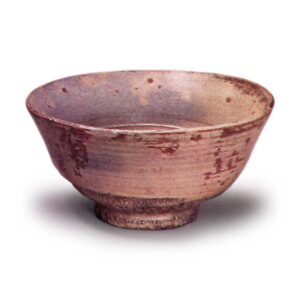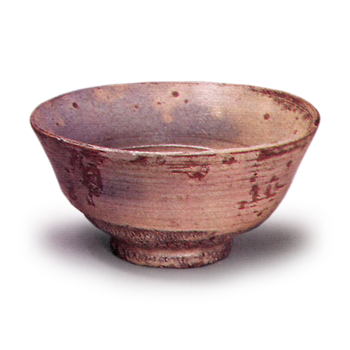
Among the Koryo tea bowls, there is the Uoya tea bowl. The number of existing tea bowls in Japan is second only to wells, and the fact that the word “tea bowl” is associated with Uoya in the world shows how well-known it is. Most of them are bowl-shaped or shaped, and are regarded as belonging to the second class of Joseon tea bowls in terms of quality. Although there are a large number of these bowls and the scenery varies, the common characteristics are that they are made of red clay, glazed with a bluish loquat-colored glaze, and have very fine and sharply defined wheel throwing. There are various theories regarding the origin of the name “fish shop. In “Soyuki”, it is written, “This tea bowl is called “TOYOYA” because it was found by Rikyu, and the same type of tea bowls are also called “UOYA”. Rikyu found it in a fishmonger’s shop. The tea bowls of the same type are also called “fishmongers.” The Honka fishmonger owned by Rikyu still exists today (see “Rikyu Fishmonger” section). It is said that Imaizumi Yusaku called the tea bowls “Totoya” because a certain merchant in Sakai bought them in the old days, which is probably true. In the “Kireyu Shoran” (A Guide to Pleasure), it is written, “Toya wa Eika ni Senshu no Sakai ha, Touya wa Eika ni Touya ni neroku Douya no Hito ha, Touya means fish shop (naya), and all the similar ones based on tea bowls are called by the family. In “Toyori” by Masashimizu Zoroku, the place of origin of Uoya is described as the eastern part of Yangsan, Gyeongsangnam-do, Korea.
There is also a theory that Uoya was made in South China. According to Kyosuke Ueda’s “A Discussion of Shina Ceramics,” “There is a pile of pieces of the same type as Naho-toya at the storefront of a general store in Ningbo, costing 56 sen per bowl, and a ship full of this type of tea bowl sunk to the bottom of the sea near the Penghu Islands in Taiwan. General Takeshita, when he was the Chief of Staff of the First Fleet, served as a diver and collected a large number of them. In addition, the “Tea Ware Meibutsu Zuishiki” says, “This tea bowl is old and new, the old one is very old and auspicious, and there is a fine string inside the bowl. Some people call this todagaya “persimmon’s calyx. The clay of this bowl is very different from that of a persimmon’s stem, but both types are ancient Korean ware and are said to have been made during the Goryeo period.



